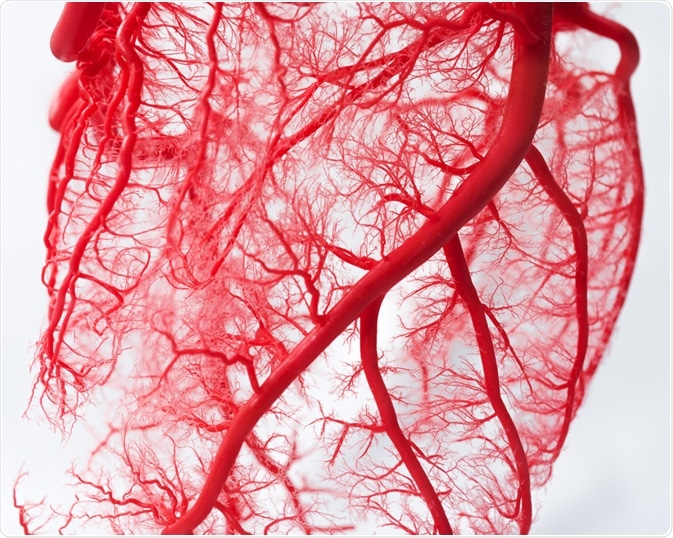When tissue is transplanted from one person to another, it is called an allograft transplant. The type of tissue that can be used in allograft transplants ranges from bones and skin to heart valves and blood vessels. Allograft transplants are typically used when tissue from one’s own body, called an autograft transplant, cannot be used.

Image Credit: ballemans/Shutterstock.com
When and why are allograft transplants used?
Allografts can be applied in a range of situations of varying severity. For example, bone allograft transplants can be used to repair limbs in orthopedics or can be used in dental or plastic surgery for more superficial reasons. Transplanted skin can be used to treat serious burns and transplanted corneas can help return vision to a patient with damaged or failed corneas.
In addition to being used directly for treating patients, allograft transplants can be used during the surgery itself. For example, a demineralized bone matrix is a type of bone putty made from donated bone or tissue material. The most common type of allograft transplants is musculoskeletal allograft transplants.
This ties in with one of the main reasons that allograft transplants are used: synthetic materials can have different properties from biologically human tissue and may be unsuitable for the intended use. Furthermore, allograft transplant tissue tends to be incorporated into the recipient’s own tissue, meaning it becomes an indistinguishable part of the recipient’s body after a while. Allograft transplants can also be used if there is not enough of one’s tissue to be used.
Processes involved in allograft transplants
Allograft transplants have been done for over 150 years, and during this time the processes for ensuring safety have developed. Allograft transplants are becoming increasingly common, with around 1.75 million done every year in the United States.
All tissues are recorded for organizational purposes before distribution. Public health services have strict regulations on how tissues should be handled to ensure the safety of the patients. The tissue from the donors is cleaned and processed to ensure the safety of the recipient.
There are several methods to treat tissues for allograft transplantation. During aseptic processing, the tissue is treated with alcohol, antibiotics, and detergents to rid the tissue of as many cellular elements as possible.
Allograft tissue can also be treated with a sterilization process, by which the tissue is chemically sterilized. This is often combined with gamma irradiation, which is a form of electromagnetic radiation that rids the tissue of bacteria. However, gamma irradiation may not remove viruses.
For a donor to be considered for an allograft transplant, they have to pass a background screening. This includes high-risk behaviors and transmissible diseases. The medical history of the donor is carefully reviewed, and someone close to the deceased donor is invited to be interviewed with questions similar to those posed to blood donors.
Once these steps have been passed, the donor is tested for diseases. This includes blood samples from all tissues tested for HIV, hepatitis B and C, and syphilis. If any of these are positive, the donor’s tissue is not used.
Possible risks of allograft transplants
There are rigid procedures in place to ensure the safety of allograft transplant protocols. The tissue is taken from donors, who have permitted their organs and tissues to be donated upon their death. Alternatively, permission can be given by the donor’s family, but either way, the responsibility to carry out the wishes of the deceased falls on the organ and tissue recovery organization.
For the tissue to be viable in the new host, the donor should not be unhealthy. The tissues used in allograft transplants typically come from healthy individuals who die suddenly, for example, due to accidents or sudden illnesses such as heart attacks or strokes.
Thanks to the rigorous checks done as part of allograft transplants, it is rare to get an infection from a transplanted tissue. For example, the risk of getting HIV through allograft transplants is less than 1 in 1.67 million. However, as with any surgery, there are small risks of infection or allergic reactions.
There is some risk that the recipient’s body will reject the allograft transplant tissue. However, most cleaning processes remove blood and organisms from the tissue to reduce the risk of this happening. The most common type of allograft transplants that are rejected are skin transplants.
Immunosuppressive agents are often used to improve successful allograft acceptance, but despite this, chronic allograft rejection and toxicity of these immunosuppressive drugs is a pervasive problem in the clinical execution of allograft transplants.
Sources
- Klimczak, A., and Siemionow, M., 2007. Immune Responses in Transplantation: Application to Composite Tissue Allograft. Seminars in Plastic Surgery, 21(4), pp. 226-233.
- Intermountain Healthcare. 2018. Allograft Transplant. [online] Available at: <https://intermountainhealthcare.org/ckr-ext/Dcmnt?ncid=520707951> [Accessed 16 August 2020].
- Allograft Information. 2020. Common Myths. [Accessed 16 August 2020].
Last Updated: Dec 16, 2022